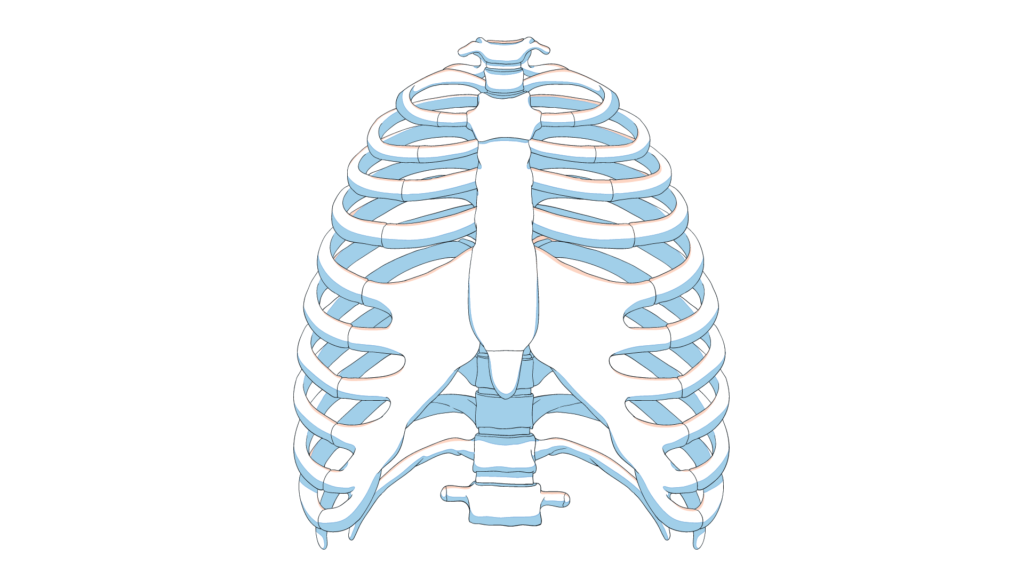
Chest Walll
Chest wall tumors (Bone and Soft Tissue Tumors)
The chest wall is defined as the exterior protective structure that surrounds the lungs and is enclosed by the spine. It comprises different kinds of elements including ribs, soft tissues, lymphatic vessels, fat, and skin. Any kind of uncontrolled outgrowth on the chest wall is referred to as a chest wall tumors. It is further categorized into primary and secondary chest wall tumors.
The primary chest wall tumors originate from the muscle, fat, tissues, cartilage, or the bone of the chest wall. The secondary tumors, on the other hand, are malignant tumors that results from cancers in other parts of the body. Primary chest wall tumours can be benign or malignant and can become very large. Amidst the primary malignant tumours, chondrosarcomas arising from cartilage are the most common.
Chest Trauma
Chest trauma or injuries are common from an accident, a forceful blow causing direct impacts on the chest wall, lungs,airway, foodpipe, blood vessels in the heart and the lungs. Chest trauma accounts for 25% of the death from accidents.
These need expert evaluation and treatment in a specialised centre like ours.
Rib Fractures – Rib Reconstructions
Rib fractures are one of the common outcomes of chest trauma and injuries from accidents. It can happen following a vehicle accident, getting punched, or from sustaining a fall from a height. The majority of the rib fractures do take time to heal completely, a minimum of 4-6 weeks before the pain and swelling start to subside. Usually no intervention is needed.
Rib reconstruction surgeries may sometimes need to be done to correct rib fractures and promote faster healing of the fractured or broken rib. These are usually patients with major deformities and for those who need ventilation where surgical correction helps to restore anatomy and rigidity o the chest wall and enables spontaneous breathing.The procedure is also often done as a corrective surgery after chest wall resection to restore the shape of the chest like before. The surgery involves using orthopedic implants, screws and bone cement to reconstruct the structure of the broken rib.
Flail Chest – Rib Fixation
A flail chest is an extremely severe condition wherein a segment of the rib cage witnesses cracks or breaking due to a sudden impact or injury, leaving it detached from the chest wall. It may be a life-threatening condition that may require immediate surgical intervention for immediate corrections. It primarily happens when three or more consecutive ribs in the chest sustain an injury or chest trauma at two places, leaving them dislodged and out of sync with the remainder of the chest wall.
Rib fixation is the most common type of surgical treatment used to treat fractured ribs. The surgeons use titanium plates to set the ribs in place till they heal completely and resort back to their correct anatomical position.
Congenital Chest Deformities (Pectus Excavatum and Pectus Carinatum)
Congenital Chest deformities are the deformities in the chest and the associated parts including the breastbone and the ribs that are diagnosed at birth. Pectus Excavatum and Pectus Carinatum are the two most common types of congenital chest deformities.
In Pectus Excavatum, the breastbone and a few of the ribs form in the inwards direction, creating a depression in the chest. The condition is often caused by the excessive outgrowth of the connective tissue that connects the ribs and the breastbone.
Pectus Carinatum is the complete opposite of excavatum. In this type of chest deformity, both the ribs and the sternum grow outwards towards the chest. It makes the chest bulge out in the patient. This condition is caused by the abnormal growth of the cartilage that connects the ribs to the chest wall and is often caused in newborns with a genetic predisposition.
